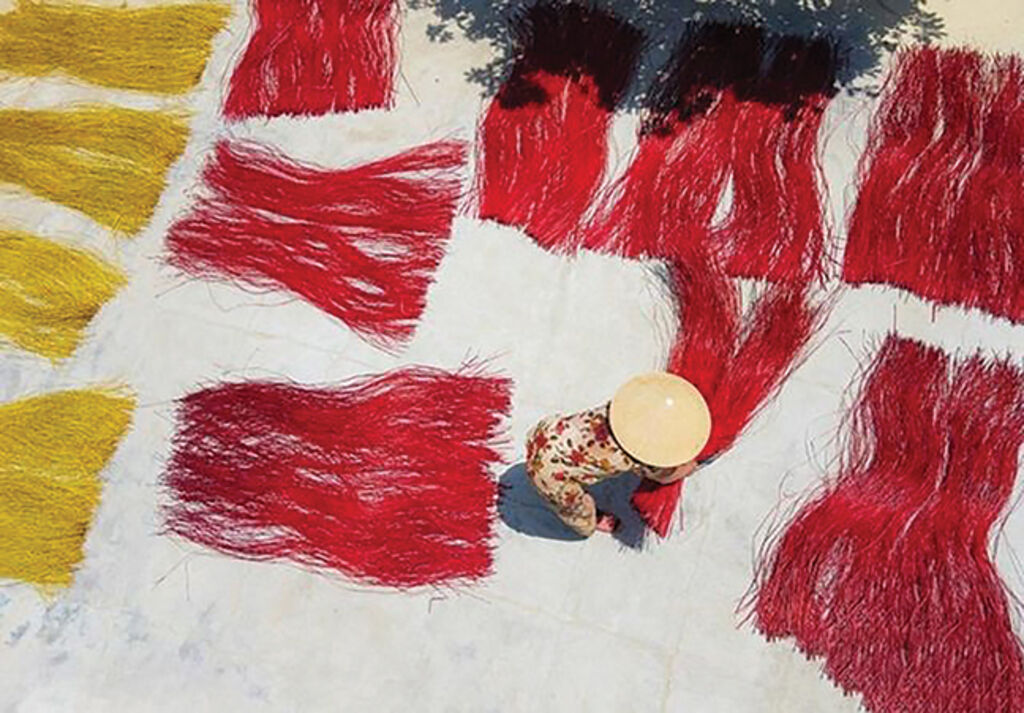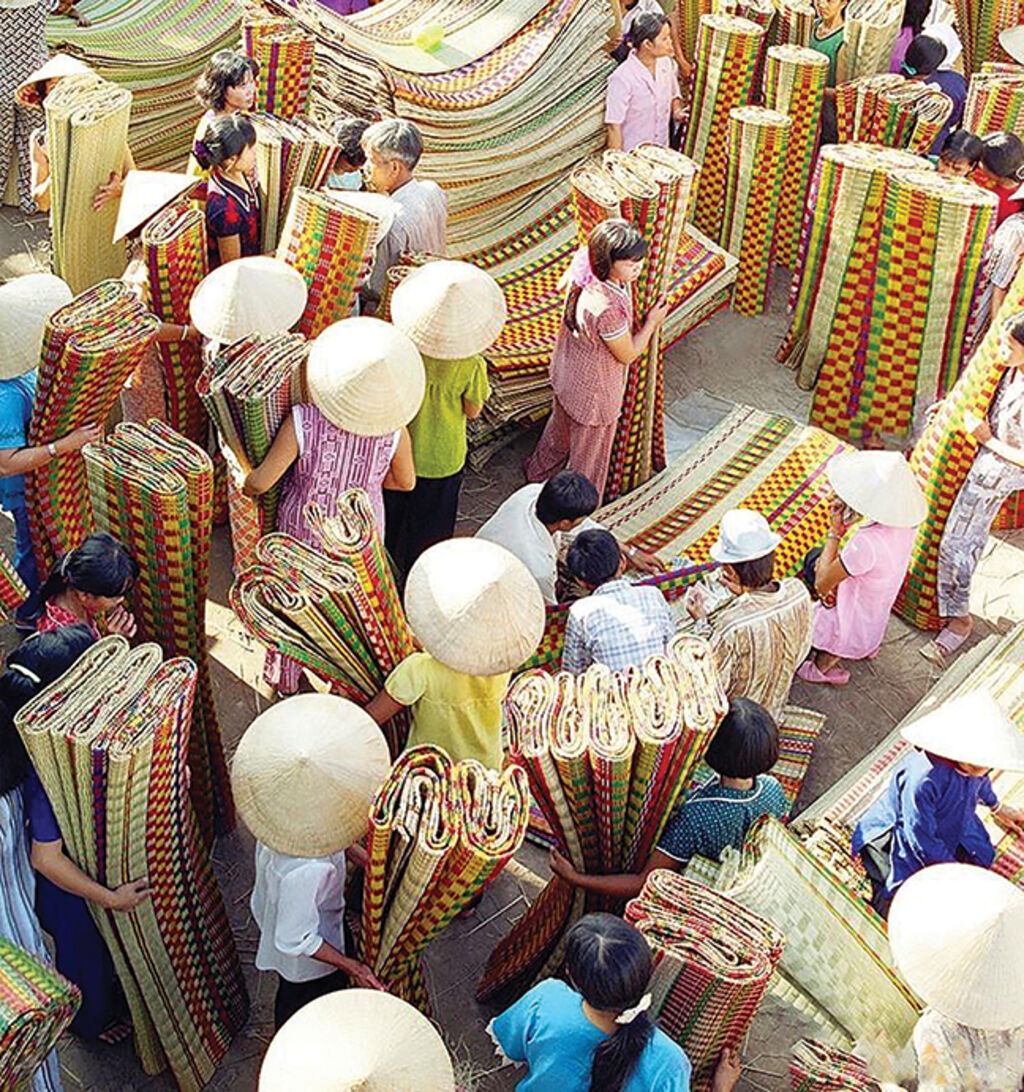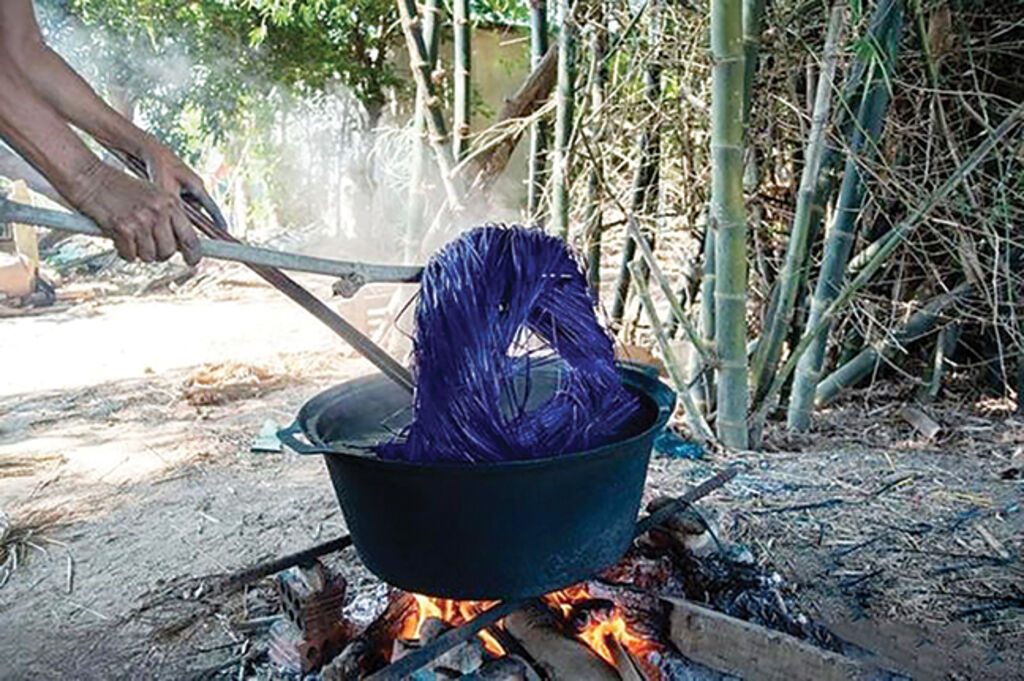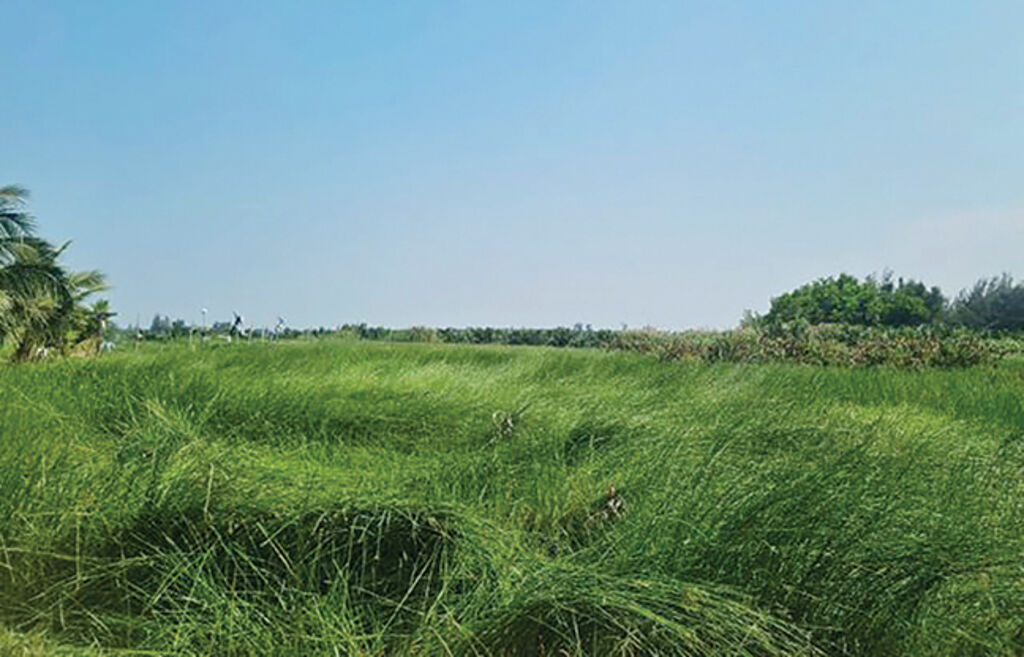 |
| Dyed sedge threads put out to dry__Photo: https://tourdanangcity.vn |
Ban Thach village, nestled in Duy Vinh commune, Duy Xuyen district of Quang Nam province, is home to a craft that has thrived for nearly 300 years: sedge mat weaving. The village lies at a unique confluence where three rivers—Thu Bon, Ly Ly, and Truong Giang—meet, creating fertile alluvial land ideal for sedge cultivation. What sets Ban Thach apart is not just the longevity of its tradition, but the vibrancy and intricacy of its hand-woven mats, which stand out in both color and design compared to those found elsewhere in Vietnam.
Historical records show that during the early period of the civil war between the Trinh lords in the North and the Nguyen lords in the South (1627–1786), widespread conflicts and instability forced many people from the northern and central regions of Vietnam to migrate southward. When these migrants arrived in what is now Ban Thach, they found both the land and the local residents welcoming—and chose to settle. Among them were mat weavers from Nga Son in present-day Thanh Hoa province, who brought their traditional craft with them. Through diligence and ingenuity, they transformed the saline soil into fertile farmland, cultivated sedge along the riverbanks, and gradually established a thriving mat weaving village.
 |
| A market selling Ban Thach mats__Photo: https://tourdanangcity.vn |
The art behind every thread
At first glance, mat weaving may appear to be a simple craft—but behind each finished mat lies a meticulous and time-honored process that begins long before the first strand is woven.
It all starts with sedge, freshly harvested from the fields. The stalks are carefully split by hand into finer strands. These slender threads are then spread out in the open air and left to dry under the sun for several days. Timing is everything during this stage. Too much sun and the sedge becomes brittle and prone to breaking; too little, and it risks developing mold. Only after three to four days of just-right sunlight is the sedge ready for the next step.
Then comes the dyeing—a delicate task entrusted only to experienced hands. Using natural dyes in vivid shades of red, green, yellow, and purple, artisans immerse the strands in boiling dye baths. Achieving the perfect hue is both an art and a science, requiring careful attention to the dye-to-water ratio and the number of dips each bundle of sedge undergoes. Deeper colors call for repeated immersion. However, not all strands are dyed. Some are deliberately left in their natural state to preserve the sedge’s original green hue. Once woven and sun-dried, these untreated threads will produce a beautifully clean white that adds contrast and brightness to the finished mat. After being dyed, all sedge—whether colored or natural—is dried once more under the sun, ready for the loom.
 |
| Dyeing sedge threads__Photo: https://tourdanangcity.vn |
With the threads fully prepared, the weaving begins. This stage requires teamwork. The loom, often made from aged bamboo or Areca wood, is operated by two artisans. One holds the warp threads taut and lifts specific sets to create the opening for the weft. The other swiftly guides the shuttle, loaded with a colorful sedge strand, through this opening. With a quick, practiced motion, the weaver then tucks the new weft strand firmly into place against the previous ones using a wooden reed. This precise back-and-forth, where one opens the path and the other fills it, continues strand by strand. Depending on the desired pattern, these skilled artisans transform simple strands into an intricate work of art.
Thanks to this special weaving technique, Ban Thach artisans do not need to print patterns onto the mat. They instead rely solely on the careful alternation of colored strands to craft their intricate motifs—geometry and artistry woven directly into the fabric of the mat.
Once weaving is complete, the mat’s edges are trimmed to prevent fraying. A final sun-drying ensures the fibers are set, and then the mat is ready for market—sturdy, beautiful, and full of the care and tradition woven into every strand.
 |
| Sedge fields in Dong Binh hamlet, Duy Vinh commune__Photo: https://tourdanangcity.vn |
Reviving a tradition under strain
Yet despite the skill and artistry behind every mat, the traditional craft is facing a steady decline. In recent years, machine-made plastic and bamboo mats have flooded the market, pushing handmade sedge mats into the background. With lower demand have come lower selling prices—and with that, dwindling incomes for local artisans. Many families have abandoned the craft altogether. The once-vast sedge fields that stretched across riverbanks during the craft’s heyday have diminished to just few hectares.
Recognizing the cultural and economic values of this time-honored tradition, local authorities are stepping in to support its revival. According to Nguyen Van Tai, Vice Chairman of the People’s Committee of Duy Vinh commune, the local administration are going to provide support for villagers to restore sedge cultivation areas and improve infrastructure. Plans to link the craft with tourism also offer hope, promising not only economic support but also greater recognition of the village’s cultural heritage. With these initiatives, Ban Thach is holding on to its legacy—keeping alive the craft that has defined its identity for centuries.- (VLLF)









